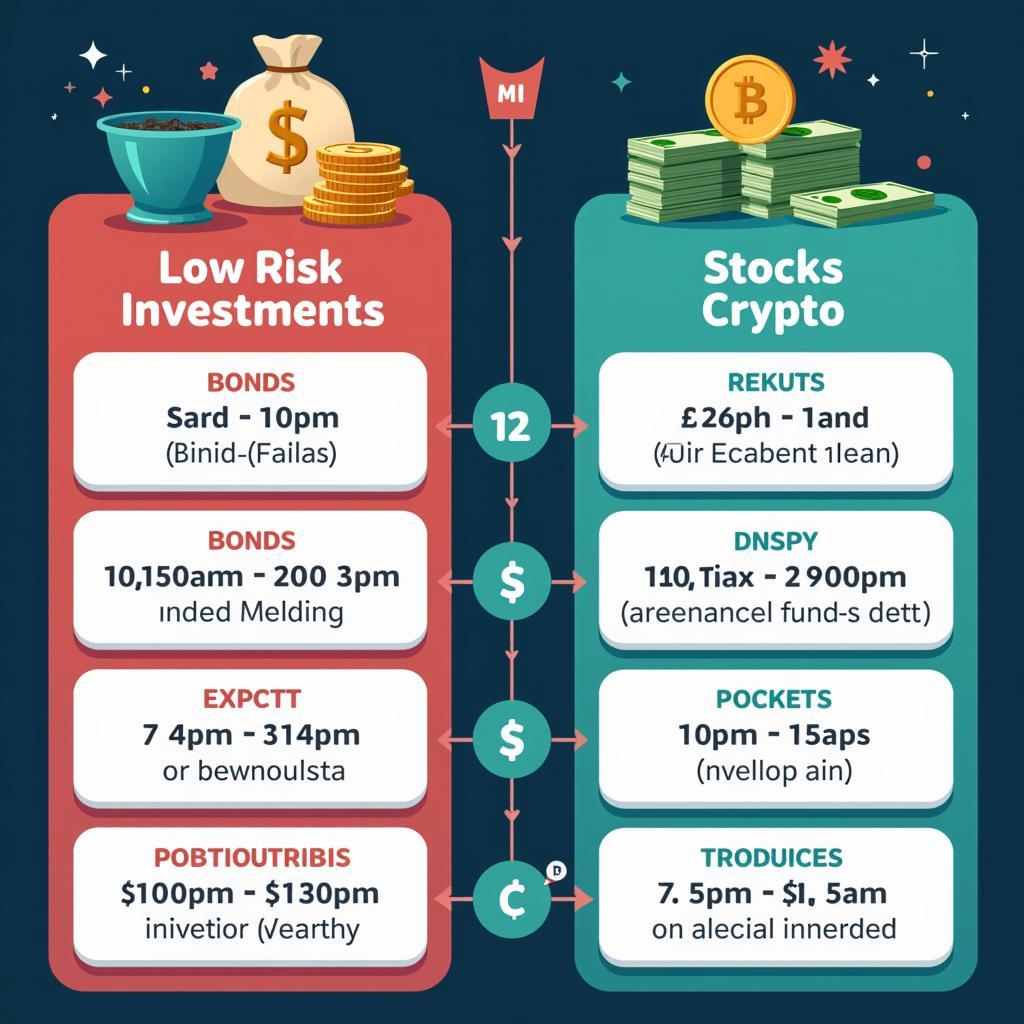Investment-related topics have consistently appeared in IELTS Writing Task 2, particularly focusing on financial planning and risk management. Based on analysis of past exam questions, this theme appears in approximately 15% of economics-related questions, making it a significant topic for test preparation.
For aspiring IELTS candidates seeking to understand financial security through smart investment choices, let’s examine a recent exam question:
Some people believe that investing in low-risk assets like government bonds and savings accounts is the best way to secure one’s financial future, while others prefer high-risk investments such as stocks and cryptocurrencies. Discuss both views and give your own opinion.
Question Analysis
This question requires candidates to:
- Compare two contrasting investment approaches
- Evaluate the benefits and drawbacks of each strategy
- Present a balanced discussion
- Provide a clear personal stance

Sample Essay 1 (Band 8)
There is ongoing debate about whether conservative or aggressive investment strategies better serve long-term financial security. While both approaches have their merits, I believe a balanced portfolio with emphasis on low-risk investments provides the most sustainable path to financial stability.
Low-risk investments offer several compelling advantages. Government bonds and savings accounts provide guaranteed returns and protect capital, which is crucial for financial planning. Furthermore, these instruments typically offer protection against inflation and economic downturns, ensuring stability during market volatility. The predictable nature of these investments allows individuals to plan their futures with greater confidence.
Conversely, high-risk investments can potentially generate substantial returns. Stock markets historically outperform low-risk investments over extended periods, while cryptocurrencies have created numerous overnight millionaires. However, these opportunities come with significant drawbacks, including potential total loss of investment and severe psychological stress during market downturns.
In my view, while high-risk investments have their place, prioritizing low-risk assets forms the foundation of sound financial planning. A prudent approach involves allocating the majority of one’s portfolio to stable investments while maintaining a smaller portion for higher-risk opportunities. This strategy provides both security and growth potential, allowing investors to benefit from market upside while protecting against devastating losses.
Sample Essay 2 (Band 6.5)
Many people have different opinions about how to invest their money. Some prefer safe options like government bonds, while others choose risky investments like stocks and cryptocurrency. This essay will discuss both sides and give my opinion.
Low-risk investments are good because they are safe. When people put money in savings accounts or government bonds, they know exactly how much they will get back. This is important for people who need money for retirement or their children’s education. Also, these investments don’t lose value during economic problems.
On the other hand, high-risk investments can make more money. The stock market usually gives better returns than savings accounts, and some people have become rich from cryptocurrency. However, these investments are dangerous because people can lose all their money if things go wrong.
I think it’s better to choose mostly safe investments. While it’s okay to put some money in stocks or cryptocurrency, most savings should be in secure places. This way, people can protect their future while still having a chance to make extra money.
Band Score Analysis
Band 8 Essay Strengths:
- Sophisticated vocabulary: “compelling advantages,” “sustainable path”
- Complex sentence structures
- Clear organization and cohesion
- Well-developed arguments with specific examples
- Appropriate academic tone
Band 6.5 Essay Features:
- Simple but clear vocabulary
- Basic sentence structures
- Adequate organization
- Limited development of ideas
- Some informal expressions
Key Vocabulary
- Portfolio (n) /pɔːtˈfəʊliəʊ/ – A collection of investments
- Volatility (n) /ˌvɒləˈtɪləti/ – Rapid and unpredictable changes
- Conservative (adj) /kənˈsɜːvətɪv/ – Avoiding risk
- Prudent (adj) /ˈpruːdnt/ – Wise and careful
- Allocation (n) /ˌæləˈkeɪʃn/ – Distribution of resources
For practice, try writing your own essay addressing this topic, considering how different investment strategies might be more suitable for different age groups or financial situations. Share your essay in the comments for feedback and discussion.